Hello everyone eager to Learn 100+ vegetables name in Sanskrit and English language with colorful pictures. This is the right place for your curiosity.
In this post, we will explore the names of vegetables in Sanskrit and English translations with images, their types, and how vegetables are traditionally used in the Sanskrit language.
Knowing the vegetables In the Sanskrit language can be beneficial in many ways. First, let’s understand why you should learn them and for whom this post is.
Table of Contents
Why You Should Learn the Vegetables Name in Sanskrit
This post is for students, language learners, chefs, travelers, and also for people who simply want to know what vegetables are called in Sanskrit. Here are some reasons:

| English | Sanskrit |
| Vegetables | शाक (shaak) |
- Connects us to history – Learning Sanskrit vocabulary provides historical agricultural knowledge and culinary practices used in ancient India.
- Connection to Ayurveda – Sanskrit names of vegetables hold key information regarding their origins and health benefits.
- Literary significance – Sanskrit vegetable names are found throughout ancient Indian medicinal and culinary texts like the Charaka Samhita.
- Insight into origins – The names give clues to the native origins of vegetables. For example, the Sanskrit word for “potato” is “आलु” (ālu) which is a Dravidian word meaning “tuber”.
This suggests the word may have originated from the Dravidian-speaking parts of India.
Tips for Memorizing Sanskrit Vegetable Names
Learning the logic and stories behind Sanskrit names makes them easier to remember.
List of Vegetables name in Sanskrit and English with beautiful pictures:
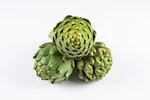
English: Artichoke.
Sanskrit: आर्टिचोक (Aartichok)

English: Ash gourd, wax gourd, winter melon.
Sanskrit: शिशिर खरबूज (Shishir kharabooj) ,कुष्माण्डा (Kushmanda)

English: Bitter gourd
Sanskrit: कटु लौकी (Katu laukee)

English: Bottle gourd,
Sanskrit: बोतल लौकी (botal laukee), अलाबु (alaabu)

English: Brinjal (Eggplant)
Sanskrit: बृन्जल् (Brinjal), वृन्ताकः (Vrintakaḥ)

English: Broad beans
Sanskrit: क्षुद्रशिम्बी (Kshudrashimbi)

English: Broccoli
Sanskrit: ब्रोकोली (brokolee)
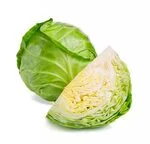
English: Cabbage
Sanskrit: कपिशाक (kapishaak)

English: Capsicum, Bell pepper
Sanskrit: महामरीचिका (Mahamarichika)

English: Carrot
Sanskrit: गुञ्जनम् (Gunjanam)

English: Cauliflower
Sanskrit: गोजिह्वा (Gojihva), पुष्पशाकम्.
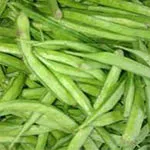
English: Cluster beans
Sanskrit: गोरक्षफालिनी (Gorakshaphalini)
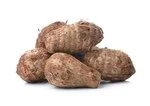
English: Colocasia (Taro root)
Sanskrit: कोलोकेसिया (Kolokesiya)
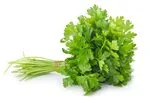
English: Coriander leaves
Sanskrit: धनियापत्रम्
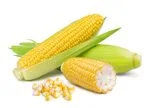
English: Corn
Sanskrit: धन्यब (Dhanyab)

English: Cucumber
Sanskrit: चर्भटि (Carbhaṭi)

English: Curry leaves
Sanskrit: सुरभिनिम्बा (Surabhinimba)

English: Drumstick
Sanskrit: सुभञ्जना (Subhanjana)

English: Fenugreek leaves
Sanskrit: मेधिका (Medhika)
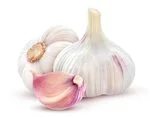
English: Garlic
Sanskrit: लशुना (lasuna)
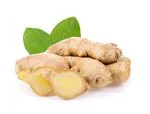
English: Ginger
Sanskrit: अदरकम्, शृङ्गवेरा (Sringavera)

English: Green chili
Sanskrit: हरित मिर्च (harit mirch), मरीचं कालय (Kaalay)

English: Green peas
Sanskrit: हरेणु (Harenuḥ), कालय (Kaalay)

English: Ivy gourd
Sanskrit: कुंदरू (kundru)

English: Kale
Sanskrit: काले (Kale)
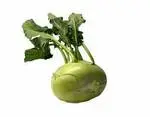
English: Knol khol, lump cabbage
Sanskrit: गांठ गोभी (gaanth gobhee)

English: Lady’s finger
Sanskrit: भिंडी (Bhindee)
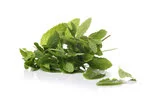
English: Peppermint leaves
Sanskrit: पुदीना (Pudina)
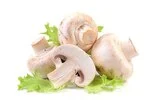
English: Mushroom
Sanskrit: कुम्भी (Kumbhi), खुखड़ी (Khukhdi)

English: Mustard leaves
Sanskrit: सरशो पत्ता (Sarsho patta)
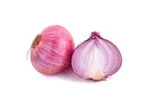
English: Onion
Sanskrit: प्याज (pyaj)

English: Potato
Sanskrit: आलू (Aloo)
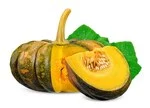
English: Pumpkin
Sanskrit: कद्दू (Kaddu), कुष्माण्डकः (Kushmandaka), ककद्वीजम् (kakadveejam)
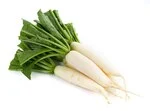
English: Radish
Sanskrit: मूली (Mooli)

English: Ridge gourd
Sanskrit: तरोई (Taroe)

English: Snake gourd
Sanskrit: चिचिंडा (Chichinda)

English: Spring onion
Sanskrit: हरा प्याज़ (Hara Pyaj)

English: Sweet potato
Sanskrit: शकरकंद (Shakarkand)

English: Tomato
Sanskrit: टमाटर (Tamatar)

English: Turmeric
Sanskrit: हल्दी (haldee)
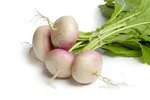
English: Turnip
Sanskrit: शलजम (Shaljam)
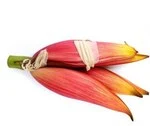
English: Banana flower
Sanskrit: केले का फूल (Kele Ka Fool)
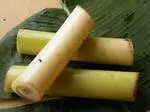
English: Banana stem
Sanskrit: केले का तना (kele ka tana)

English: Beetroot
Sanskrit: चकुंदर (Chakundar)

English: Cabbage leaves
Sanskrit: गोभी के पत्ता (gobhee ke patta)

English: Carrot leaves
Sanskrit: गाजर के पत्ते (gaajar ke patte)
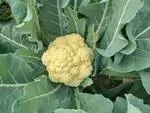
English: Cauliflower leaves
Sanskrit: फूलगोभी के पत्ते (phoolagobhee ke patte)

English: Colocasia leaves
Sanskrit: अरबी के पत्ते (arabee ke patte)

English: Coriander seeds
Sanskrit: धनिये के बीज (dhaniye ke beej)
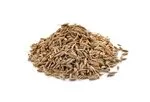
English: Cumin seeds
Sanskrit: जीरा (jeera)

English: Drumstick leaves
Sanskrit: सहजन की पत्तियां (sahajan kee pattiyaan)

English: Fenugreek seeds
Sanskrit: कसूरी मेथी (kasooree methee)
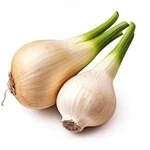
English: Garlic leaves
Sanskrit: लहसुन की पत्तियां (lahasun kee pattiyaan)

English: Papaya leaves
Sanskrit: पपीते के पत्ते (papeete ke patte)

English: Red chili
Sanskrit: कतुविरा (katuvira)

English: Yam
Sanskrit: जिमीकंद (Jimikand)
To learn about the vegetable name in Sanskrit check the video below 👇
Types of Vegetables in Sanskrit:
- Fruit vegetables (फलशाकानि)
- Cruciferous vegetables (क्रूसिफेरस शाक)
- Marrow vegetables (मज्जाशाकानि)
- Leafy vegetables (पर्णशाकानि)
- Stem vegetables (काण्ड शाक)
- Root vegetables (मूलशाकम्)
Traditional Uses of Sanskrit Vegetables
Sanskrit vegetable names give us a glimpse into their traditional culinary and medicinal usage:
Many vegetables like brinjal, tomato, pumpkin, drumstick, beans, etc. are used in cooking. However, onion, garlic, ginger, and turmeric are used in traditional Ayurvedic medicines.
Leafy vegetables like spinach, fenugreek, and amaranth were valued in Ayurveda for their medicinal properties.
Vegetables are also used in religious ceremonies, and festivals and offered to Gods.
Exotic vegetables were imported via trade routes and adapted into Indian cuisine over the centuries.
FAQ
What is the name of a vegetable in Sanskrit?
In the Sanskrit language, Vegetable is called “तरकारी” (Tarakari) and शाक (shaak).
What is the Sanskrit name for capsicum?
Capsicum or Bell pepper in Sanskrit is called “महामरीचिका “(Mahamarichika).
What is the name of the bottle gourd in Sanskrit?
Bottle gourd in Sanskrit is called “बोतल लौकी” (Botal laukee) and अलाबु (alaabu).
What is garlic called in Sanskrit?
Garlic in the Sanskrit language is called “लशुना” (Lasuna).
What is cauliflower called in Sanskrit?
Cauliflower in the Sanskrit language is called “गोजिह्वा” (Gojihva).
Conclusion
Learning the vegetables name in Sanskrit opens up a world of cultural wisdom and tradition. Beyond improving language skills, it helps appreciate the deeper meanings and origins of vegetables in India.
While Sanskrit is not commonly used worldwide, studying the language connects us to ancient India.
I hope this blog post provided a helpful overview of the names of vegetables in Sanskrit and English with translations. If you liked this post, do share it with your friends and follow us on Instagram for instant updates. Stay healthy!
Recent Searches: vegetables name in Sanskrit and English with pictures, vegetables in Sanskrit, Sanskrit vegetables, names of vegetables in Sanskrit, Sanskrit vocabulary vegetables.